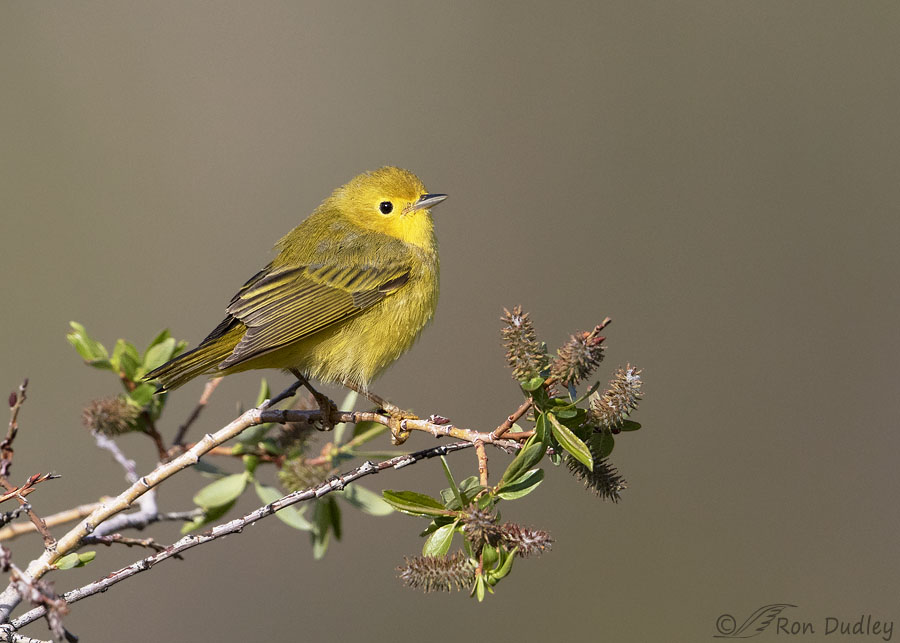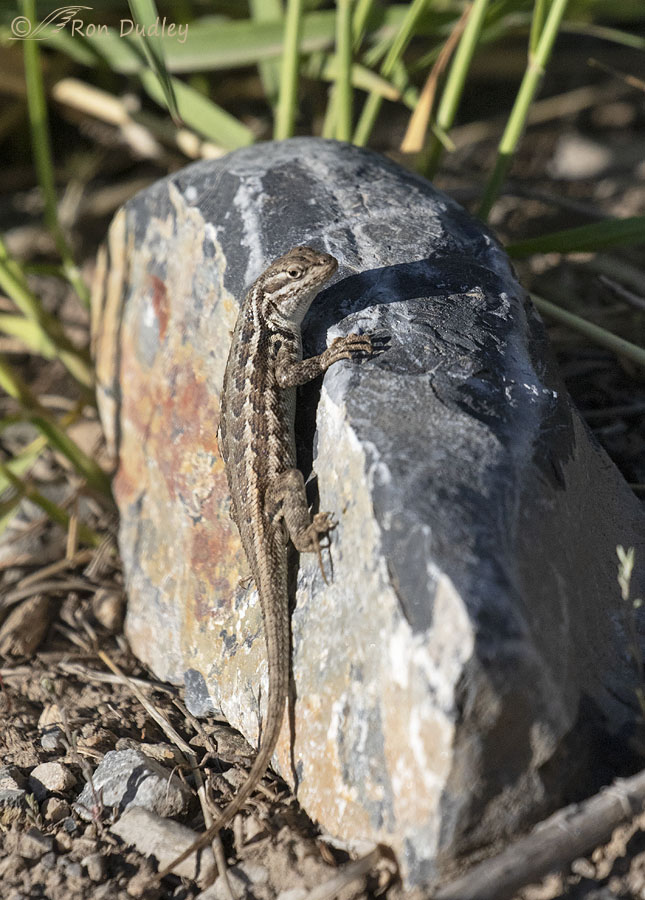A classic combination of bird and habitat.

1/3200, f/5.6, ISO 800, Canon 7D Mark II, Canon EF 500mm f/4L IS II USM + EF 1.4 III Extender, not baited, set up or called in
Five days ago this female Yellow Warbler popped up onto a willow branch overhanging a pond in the mountains. She wasn’t particularly close but she posed nicely against a clean background, she’s sharp and I like the composition of the image. I always enjoy photographing birds in classic settings for the species. Willows and Yellow Warblers just seem to go together, so much so that Cornell’s Birds of North America begins their introductory paragraph on Yellow Warblers this way:.
- “A splash of yellow in a patch of willow. Aptly named, the Yellow Warbler is found throughout much of North America in habitats briefly categorized as wet, deciduous thickets. One common feature of Yellow Warbler habitat is the presence of various species of willows (Salix spp.), which dominate regions with high densities of Yellow Warblers.”
Yellow Warblers are both abundant and widespread so they don’t generate as much excitement amongst birders and bird photographers as some of the less abundant warbler species but they’re one of my favorites. They’re so colorful and cheery, who couldn’t love them?
They’re one of our earliest fall migrants, beginning to head south in mid-July, so we’d best enjoy them while we can.
Ron
On a completely unrelated note:
Several days ago in the Stansbury Mountains while I was waiting at a flowering bush for hummingbirds that never did show up this lizard was snagging insects from a rock directly below my pickup window. I had to take ‘his’ photo but now I’m curious about what species it is.
Any thoughts from my readers? This herpetology-challenged biologist wants to know.



It is mating season for Maryland’s Blue-tailed Skinks. I have had several basking on my front steps since the winter relented. Cute little guys, anywhere from hatchlings at 3 inches to their grandparents at around a foot.
Your TOY and TOM Yellow Warbler. You’re on a roll.
An eye catch in the corner of the lizard’s eye. Wouldn’t have expected anything less.
Good eye to notice that catch light, Lyle. I chose to post this photo instead of one other one specifically because it had a catch light.
Lovely Warbler in the setting and colors. I wonder if they eat the catkins like waxwings do?
My guess on the lizard is also Western Fence Lizard. No expert, just guess from past experience on lizards in the area.
Thanks, April. Looks like we’re working on a consensus of western fence lizard.
Your warbler is indeed a cheery sight, with a lovely combination of elements in that image … but I have to say, I do also love that lizard pic. He picked an ideal perch (colorful rock, no bird poop) for you to photograph his best side! He does have the western-fence look about him, but also the splotchy side … so, no clue!
Thanks, Chris. I was looking steeply down at him from my pickup windoe so I couldn’t get his tail sharp but he’s still pretty cute…
I am (of course) clueless about your lizard, beauty that it is.
It will not be light here for several hours so I am delighting in the sunshine the warbler gives me. Thank you.
Thanks, EC. Enjoy your real sunshine when you can.
The lizard looks a lot like the western fence lizard which is found in Utah and which we have in California as well.
Thanks for the tip, Buff.
It is so rare when all the elements one could hope for come together in a photograph. When it happens, as in this instance – wow!
The subject is a beauty, so that doesn’t hurt, but your experience in camera settings, composition, patience, locale, processing – outstanding results!
Thanks very much, Wally.
Even on a dreary day, these little ones provide a ray of sunshine. Great photo…he just shines on that branch. Like that background. I have a favorite small pond that I frequent; it has willow thickets along the sides and I always find yellow warblers flitting about in them. I think the kinglets also like the spot as they are a frequent guest. Always a good spot for photos.
Kathy, when I see kinglets they’re usually in drier environments than this.
On rare occasions I get a clear shot of the Yellow Warblers, but for the most part they seem to be hard to fairly elusive. Agree with Terri Ann on Common Side-blotched lizard, but definitely not sure. Would love to have some of your rain here in North/Central AZ.
I don’t think we’re going to have enough rain to share, Everett. Only 3/10ths in the rain guage so far and it’s sunny at the moment.
Love the way some bird have a way to camouflage themselves into the environment. And then you see this yellow cutie that stands out

No clue on your lizard
I’m mostly stumped on the lizard too, Diana.
Side-blotched lizard? https://en.wikipedia.org/wiki/Side-blotched_lizard
Could be, Terri. I know we have them in Utah.
The Yellow Warbler’s are a cheery sight and fun to watch. We don’t get many and they can be a bit illusive BUT I do enjoy them…. No help on the lizard since they aren’t part of the scenery here……
No help on the lizard since they aren’t part of the scenery here…… 
Birds a likely to have a short food supply later given the snow and freeze we just had while many things were blooming. When the sun comes out….. Won’t be a for a few days – a good thing….
Won’t be a for a few days – a good thing….
Judy, I’ve been seeing lots of stuff online about the snow and cold Montana has been experiencing of late. It’s going to take folks, critters and plants some time to recover I’m sure. Raining here today.